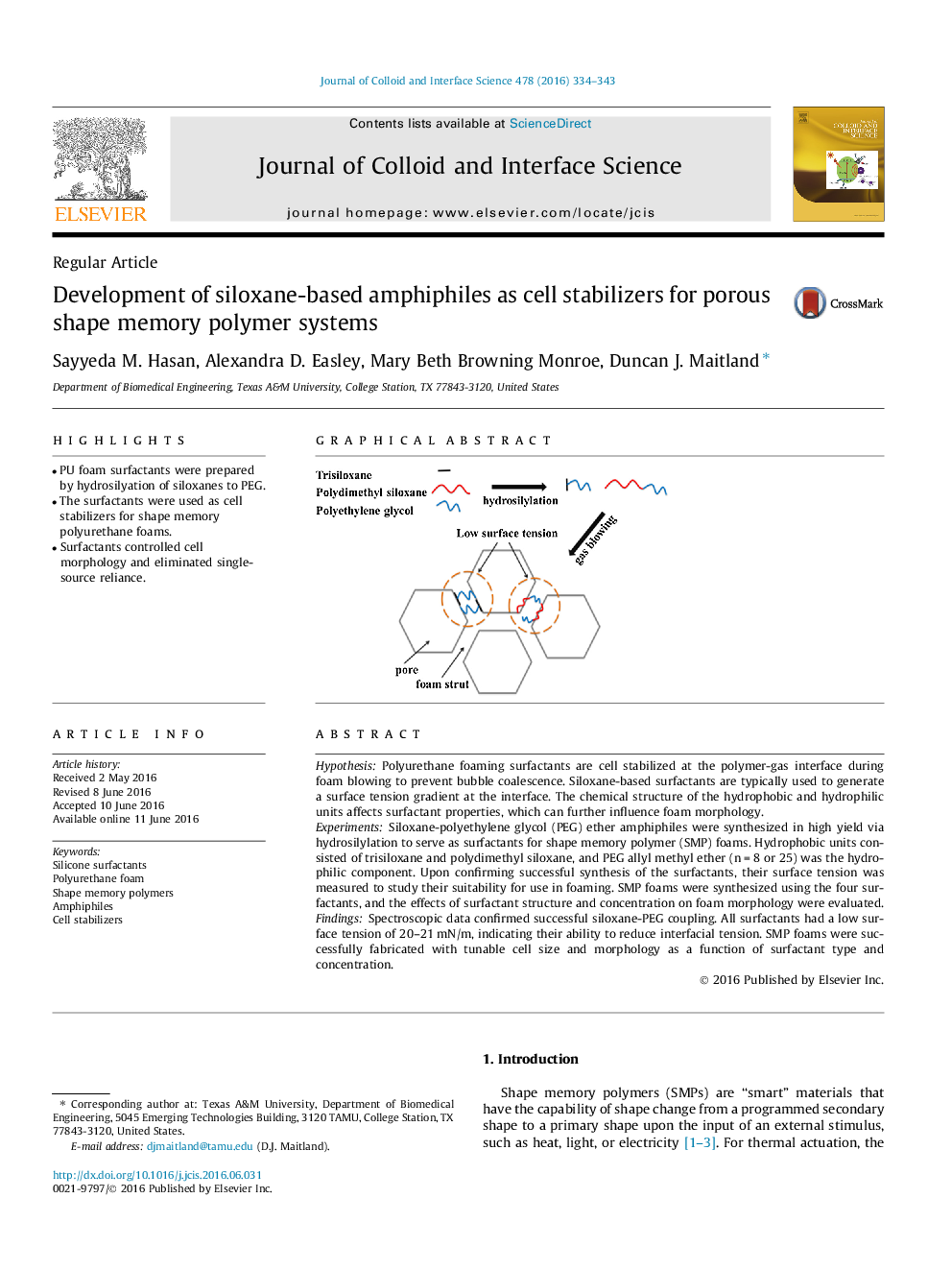| Article ID | Journal | Published Year | Pages | File Type |
|---|---|---|---|---|
| 606223 | Journal of Colloid and Interface Science | 2016 | 10 Pages |
•PU foam surfactants were prepared by hydrosilyation of siloxanes to PEG.•The surfactants were used as cell stabilizers for shape memory polyurethane foams.•Surfactants controlled cell morphology and eliminated single-source reliance.
HypothesisPolyurethane foaming surfactants are cell stabilized at the polymer-gas interface during foam blowing to prevent bubble coalescence. Siloxane-based surfactants are typically used to generate a surface tension gradient at the interface. The chemical structure of the hydrophobic and hydrophilic units affects surfactant properties, which can further influence foam morphology.ExperimentsSiloxane-polyethylene glycol (PEG) ether amphiphiles were synthesized in high yield via hydrosilylation to serve as surfactants for shape memory polymer (SMP) foams. Hydrophobic units consisted of trisiloxane and polydimethyl siloxane, and PEG allyl methyl ether (n = 8 or 25) was the hydrophilic component. Upon confirming successful synthesis of the surfactants, their surface tension was measured to study their suitability for use in foaming. SMP foams were synthesized using the four surfactants, and the effects of surfactant structure and concentration on foam morphology were evaluated.FindingsSpectroscopic data confirmed successful siloxane-PEG coupling. All surfactants had a low surface tension of 20–21 mN/m, indicating their ability to reduce interfacial tension. SMP foams were successfully fabricated with tunable cell size and morphology as a function of surfactant type and concentration.
Graphical abstractFigure optionsDownload full-size imageDownload high-quality image (89 K)Download as PowerPoint slide
